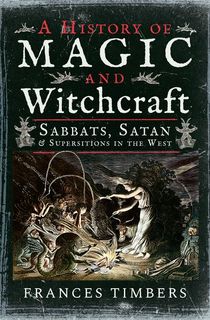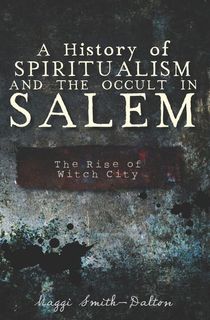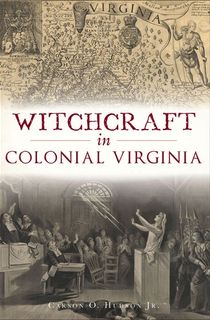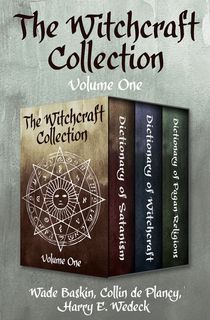Whether they were accused of conferring with the Devil or merely stood as threats to conventional society, witches have long captured the public imagination. Today, many are seen as feminist icons. Others have been linked to death and destruction.
Occasionally terrifying and sometimes inspiring, here are nine of the most famous witches throughout history.
1. La Voisin

Catherine Monvoisin, also known as La Voisin, lived in France in the mid-1600s. She practiced medicine, including midwifery and abortions, mixed potions and poisons, told fortunes, and arranged black masses, where clients could confer with the Devil. She was also one of the heads of the affaire des poisons, a cult who poisoned many members of the French aristocracy, and who had planned to poison King Louis XIV. Her most famous client was Madame de Montespan, the King’s mistress. It was by Montespan’s order that La Voisin attempted to poison the King, for his infidelity.
In the late 1670s, fear of poisoning and witchcraft reached a fever pitch in the streets of France, and many successful fortune-tellers and poisoners, including La Voisin, were arrested. She was burned publicly after being convicted of witchcraft in 1680.
2. Alice Kyteler
The first recorded woman condemned for witchcraft in Ireland, Kyteler lived from the late 1200s to the early 1300s. Kyteler was married four times, which already marked her as an usual woman. After her fourth husband died expressing fear that he had been poisoned, his children and the children of her three previous husbands accused her of using poison and sorcery against their fathers. She was accused of myriad other depraved acts, such as animal sacrifice, worshiping Satan, and using her powers to manipulate and control Christians. One of her servants, Petronella de Meath, was tortured by Church authorities and confessed to witchcraft, thereby implicating Kyteler. At this point, Kyteler fled the country, presumably to England. She was never heard from again.
3. Isobel Gowdie

Tried and executed for witchcraft in 1662, Gowdie is notable for her detailed confession, which she gave of her own volition, without being tortured like so many other women of the time. Gowdie was a young housewife living at Auldearn, Highland, Scotland. Her confessions about her coven’s activities, including their supposed ability to transform into animals, gave great insight into European folklore surrounding witchcraft at that time. She also claimed to be “entertained” by the Queen of the Fairies, in her home “under the hills.” Some speculate that Gowdie’s confession may have been the result of psychosis, or a ploy to get a more lenient sentence.
4. Moll Dyer

If you’ve seen The Blair Witch Project, then you’re already familiar with the legend of the infamous Moll Dyer. Though her story is more lore and superstition than recorded fact, this supposed resident of Leonardtown, Maryland has been the inspiration behind many local tales and even major movies. Dyer lived in the late 1600s. A group of her fellow townspeople accused her of witchcraft, and she was chased out of her home by a group of men on a winter night. Her body was found days later, frozen to a large stone.
Stories about her malevolent spirit, haunting the land around her wooded cabin and terrorizing any who come near as revenge against those who wronged her, are rampant.

A History of Magic and Witchcraft
5. Marie Laveau

Marie Laveau's gravestone in Saint Louis Cemetery No. 1.
Photo Credit: Wikimedia CommonsRecently portrayed by Angela Bassett in American Horror Story: Coven, Marie Laveau is most accurately described as a Voodoo priestess. She lived in New Orleans from 1794 to 1881, and though little is known about her life, it is widely recorded that she had a massive following, and commanded respect as she walked the New Orleans streets. There is speculation that her magic mixed Catholic and African spiritual traditions; that her divinations were supported by a network she assembled while working as a hairdresser and a brothel madame; that she owned a snake named Zombi after an African god, and many more. After her death, her gravesite was rampant with vandalism, for many visitors believed Laveau’s spirit would grant wishes if they drew an “X” on her gravestone. Today, one must have a tour guide to enter the cemetery where she is buried.
6. Dion Fortune

Born Violet Mary Firth in 1890, Dion Fortune was a British occultist and author, thought of by many as a modern-day witch. She wrote prolifically about the occult in both fiction and non-fictional works. In 1924, she founded the Fraternity of the Inner Light, a magical society dealing with religious philosophy and alternative realities. She died in 1946, leaving behind her magical society, which has survived to this day. Ronald Hutton, in his book, The Triumph of the Moon: A History of Modern Pagan Witchcraft, considers her “the foremost female figure” of early 1900s British occultism.

A History of Spiritualism and the Occult in Salem
7. Tituba

It is likely you have heard this name from Arthur Miller’s The Crucible, but like many other characters in the play, Tituba was inspired by a real person. Although it's unclear which South American country she originated from, Tituba was brought to the American colonies as a slave to Samuel Parris. During the 1692 Salem witch trials, Tituba was the first person accused of witchcraft by Elizabeth Parris and Abigail Williams.
Initially, Tituba denied any involvement, but like so many of the accused, her will was quickly broken. Tituba admitted to the participation of an occult ritual, saying that she had baked a witchcake in an attempt to help her mistress, Elizabeth Parris. Tituba embellished her confession by adding details about her service to the devil, riding on sticks, and being told by a black dog to harm the children. Her testimony was both bizarre and frightening, as Tituba stated that she pinched the girls and had signed a devil’s book. Tituba, along with many others, was imprisoned for nearly a year, but managed not to be one of the women hanged for witchcraft.
Tituba languished in prison for a year, as her master would not pay her jail fees. Eventually, in 1693, an unknown individual purchased Tituba from the prison for the price of her jail fees. After this, the woman's path disappeared from history.

Salem's Witch House
8. Malin Matsdotter
Known as the Great Noise, the largest witch trial in Swedish history brought forth a tenacious Swedish widow. In July 1676, Malin Matsdotter was reported for witchcraft... by her own family. Matsdotter’s daughters accused their mother of abducting their children and taking them to a satanic sabbath. Matsdotter was found guilty thanks to the testimony of her daughters and her lack of religious knowledge and prayers.
Matsdotter, along with Anna Simonsdotter Hack, became the last people executed for witchcraft in Stockholm. While witches were usually decapitated or hanged to death, the court decided to give Matsdotter a different sentence after she refused to admit her guilt. While Anna asked for forgiveness, Matsdotter maintained her innocence and thus became the only Swedish witch to have been burned alive. One local reported that as the flames covered her body, Matsdotter did not scream or appear to be in pain—for some, proving that she was in fact a witch.

Witchcraft in Colonial Virginia
9. Mother Shipton

Ursula Southeil, better known as Mother Shipton, was a highly regarded and feared English prophetess during the 1500s. Locals referred to Mother Shipton as “Hag Face” due to her ugliness and disfigurement. Many believed that she was the daughter of a suspected witch, Agatha Southeil, and the Devil. Despite her appearance, Mother Shipton was considered England's greatest clairvoyant and was even compared to Nostradamus. Some of Mother Shipton’s prophecies foretell many modern events and phenomena; it is said she predicted the Spanish Armada, the Great Plague of London, the Great Fire of London, the execution of Mary Queen of Scots, and the Internet. Unlike so many other well-known witches, Mother Shipton died a natural death and was buried on the outer edges of York in 1561.

The Witchcraft Collection Volume One
Featured photo of Marie Laveau: Wikimedia Commons
